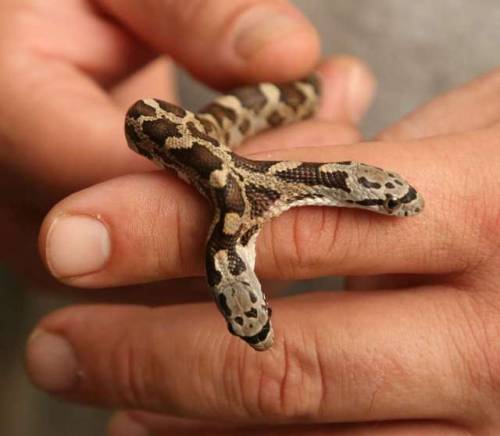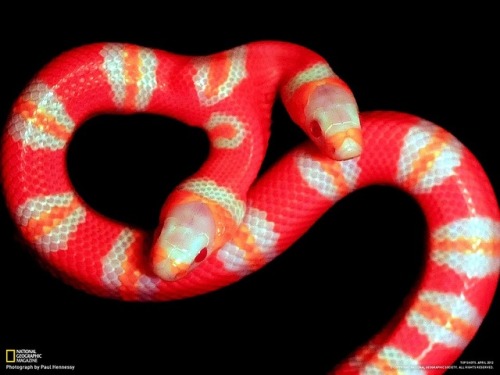titleknown: end0skeletal:unidentifiablelifeform:end0skeletal: Polycephaly is the condition of
titleknown: end0skeletal: unidentifiablelifeform: end0skeletal: Polycephaly is the condition of having more than one head. Two-headed animals (called bicephalic or dicephalic) and three-headed (tricephalic) animals are the only type of multi-headed creatures seen in the real world, and form by the same process as conjoined twins from monozygotic twin embryos. While two headed snakes are rare, they do occur in both the wild and in captivity at a rate of about 1 in 10,000 births. Most wild polycephalic snakes do not live long, but some captive individuals do. A two-headed black rat snake with separate throats and stomachs survived for 20 years. (Sources: x x x x x x x x) Why does this seem to happen to snakes so often compared to other animals? I mean, you don’t see this happen to dogs or cats very often but snake embryos seem almost eager to mix it up every once in a while and pull a two-for-one deal in the head department. The consensus seems to be that polycephaly occurs more often in reptiles than other animals, but the why of it, as far as I could find out, is relatively unknown. Polycephalic animals appear so infrequently and they survive for such a short time that scientists just have not been able to study them sufficiently. If anyone can find more information about why it happens more often in reptiles, feel free to chime in. In the meantime, enjoy these two-headed lizards and turtles: @tyrantisterror -- source link
Tumblr Blog : end0skeletal.tumblr.com









